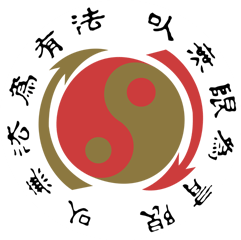The true martial artist
by Taky Kimura

Bruce Lee™ was a multi-talented person even at the age of eighteen as he brightened the horizons of Seattle. His five-foot-seven-inch frame would explode upon any given stage with the awesomeness of a comet and you were immediately captivated by his lovable personality. Bruce once shared with me the sentiment that he was relaxed and comfortable with people from all strata of society. He attributed this to the ultimate essence of the physicality and spirituality of the highest level of martial art. In my opinion, this was imbued in him, and Bruce lived and died the life of a true warrior.
I have often said that my first introduction to Bruce was an awesome experience. However, I was also fortunate in being able to experience the many other aspects of his personality, such as the teenage comedian and the mature philosopher. I felt particularly enchanted by this Iast characteristic and somehow knew that I had to follow him.
For those unfamiliar with the background of Bruce Lee™ it may help if I take a moment to share with you how he came to introduce gung fu, a uniquely Chinese art, to North America. Bruce arrived in Seattle in 1959 at the age of eighteen, after a brief sojourn in San Francisco. With the help of several local television appearances and public demonstrations, Bruce began to give instruction to all Americans – regardless of race, creed, or national origin.
Even while growing up in Hong Kong, Bruce had experienced his fair share of prejudice and discrimination. This led him to become involved in the martial arts for both mental and physical self-preservation. He often spoke to me of the way the British officers looked down upon and mistreated the Chinese. From this background, Bruce swore to use the martial arts as a tool to express his ultimate desire: to create equality among the peoples of the world.
Even in Seattle during this early stage of his life’s journey, Bruce denounced the “classical mess” and promoted the art of simplicity and harmony. In time, Bruce would modify his vast knowledge of the many arts to arrive at the ultimate stage of realistic simplicity: Jeet Kune Do. However, whether he was instructing his students in the Jun Fan method of gung fu or in Jeet Kune Do, Bruce understood that in either case, simplicity, honesty, and desire comes only from deep within your heart, and he incorporated this precious characteristic into all of his teachings.
Bruce was uniquely possessed with natural-born attributes: speed, coordination, gracefulness, high mentality, and charm. All of these factors contributed to his keen sense of separating reality from fantasy. Rather than condemn any particular system of martial art, Bruce absorbed what was useful and discarded what was useless, and he taught us what he considered the “reality” of martial art – simplicity, harmony, and integrity.
This is in many ways comparable to the ultimate beauty that resides in the way young children expresses themselves in the most simple, spontaneous, flowing manner. Their sincerity of emotion just comes forth naturally. Bruce preached to us about the cold facts of life: for example, if you want to become a swimmer, you cannot do so on dry land, you must enter the water. He shared with me and all who studied with him the absolutes: honesty, respect to all, humility, confidence, and the cultivating of an insatiable desire to reach your goal!
When Bruce was alive, he always pushed me in a direction that I believe he would wish all of us to follow: To fulfill to the utmost your physical capabilities which enable you to identify who you really are with humility and pride. Once this is accomplished, the door will open and you will enter the kingdom of philosophical spirituality.
The Seattle curriculum that Bruce entrusted me to teach began with this unique and simple concept of truth and reality.

Even now, my blood becomes feverish when I reflect upon I bygone days when Bruce and I were together. He ingeniously helped meto recapture the days I lost having been interned for five years in an American concentration camp for simply having been born of Japanese descent. I had just graduated from high school and Bruce provided me with a therapy of sorts – just being able to “hang out” and do some of the light-hearted, crazy things that I had missed out on and been deprived of during my internment. The bitterness, negativeness, and the feeling of complete inferiority that plagued me in the days before Bruce Lee™ came into my life, are- as a direct result of his teachings and my own willingness to apply them – now just water that has passed under the bridge. I realize now that there was a concealed, hidden enrichment that I gleaned from my experiences, both positive and negative, that has served to make me a better person today.
Bruce used to say “He who knows but knows not he knows, he is asleep – awaken him.” Although I would not come to appreciate this statement until many years later, I am thankful that he “filled my cup” without my even realizing it, somehow knowing that I “knew not that I knew.”
I have many cherished memories of Bruce. We trained together, ate together, went to movies together, and talked about every topic under the sun. I vividly remember appearing with Bruce when he gave martial art demonstrations in Seattle and California, where I experienced the hair-raising effect of facing his punches and kicks, which would explode toward me with the power and speed of a hurricane, only to stop a fraction of an inch from my face. The force of the breeze caused by his blows would literally “part” my hair!
Bruce was my mentor, my sifu, my advisor, and, most importantly, my friend. He embodied the highest principles of the true martial artist.
